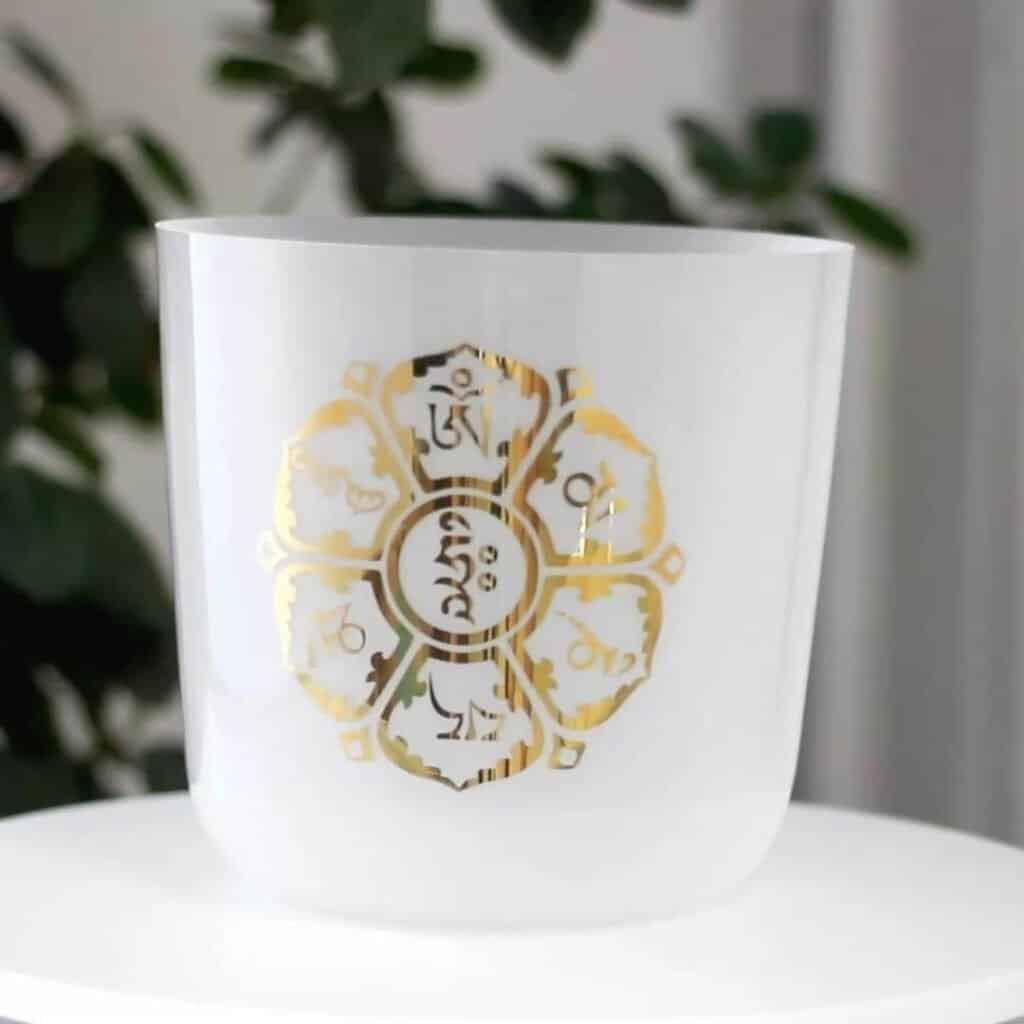You might be surprised to know that just a few minutes of meditation each day can greatly boost your mental clarity. Many people overlook simple yet effective techniques that can sharpen focus and enhance decision-making. By exploring methods such as mindfulness and loving-kindness meditation, you can discover how these practices impact your thought processes and overall well-being. What you might find even more intriguing is how these techniques are accessible and adaptable, fitting seamlessly into your daily routine. Curious about which ones can fit your lifestyle?
Key Takeaways
- Focused Attention Meditation improves mental clarity by concentrating on a single point, eliminating distractions for clearer thinking.
- Breath Awareness and Zen Meditation enhances awareness of natural breathing patterns, deepening the meditation experience and promoting calmness.
- Loving-Kindness Meditation builds compassion and empathy, fostering emotional well-being which supports mental clarity through reduced anxiety.
- Transcendental Meditation (TM) uses mantra repetition for effortless awareness, leading to benefits like improved attention span and emotional balance.
- Guided Visualization techniques create vivid imagery that enhances focus, empowering problem-solving and cultivating mental clarity.
Mindfulness Meditation

Mindfulness meditation is a powerful practice that helps you focus on the present moment. By intentionally directing your attention to your thoughts, feelings, and sensations without judgment, you create a space where stress and anxiety can fade away. One of the significant mindfulness benefits is that you cultivate a greater sense of awareness, which allows you to respond to situations more thoughtfully rather than reactively.
You can incorporate various mindfulness practices into your daily routine. For example, you might begin by sitting comfortably, closing your eyes, and simply concentrating on your breath. Feel the air entering and leaving your body, noticing the rhythm without trying to change it. Another technique involves walking mindfully, where you take slow, deliberate steps while focusing on the sensation of your feet connecting with the ground.
As you develop a consistent mindfulness practice, you'll likely notice improvements in your emotional regulation, increased focus, and enhanced overall well-being. You'll not only become more attuned to your inner world, but you'll also find clarity in the chaos of everyday life. Embracing mindfulness meditation can truly transform how you experience each moment.
Focused Attention Meditation
Focused attention meditation is a technique where you concentrate on a single point of focus, whether it's your breath, a mantra, or an object. This method helps sharpen your mental clarity by training your mind to eliminate distractions and strengthen your ability to concentrate. To begin, find a quiet space where you can sit comfortably. Start with focused breathing; take deep, calming breaths, allowing your body to relax and settle.
As you inhale, imagine drawing in clarity and positivity, while exhaling all distractions and tension. Select your point of focus, and gently guide your attention back to it each time your mind wanders. This practice cultivates concentration techniques, helping you develop a sharper focus over time.
You might notice thoughts drifting in and out, and that's perfectly okay; the key is to acknowledge them without judgment and return your attention to your chosen focal point. With consistent practice, focused attention meditation can enhance your overall mindfulness and mental acuity. Include this technique in your daily routine, and you'll likely find that you can think more clearly and make decisions with greater confidence.
Loving-Kindness Meditation

Loving-kindness meditation, often practiced regularly, cultivates a sense of compassion and connection to oneself and others. This form of meditation invites you to generate positive feelings not only for yourself but for those around you, fostering a profound emotional healing experience. By focusing on loving-kindness benefits, you can enhance your overall well-being, as research shows consistent practice leads to reduced anxiety and increased feelings of happiness.
In your self-acceptance practice, you'll find it easier to embrace who you are without judgment. Start by silently repeating phrases like, "May I be happy, may I be healthy," gradually extending these wishes to loved ones, acquaintances, and even those you may have conflict with. This process is essential for compassion cultivation; it helps you release negative feelings and builds empathy for the struggles others face.
As you engage in loving-kindness meditation, you're not just benefiting yourself. You create an atmosphere of kindness and understanding in your relationships, nurturing a ripple effect of positivity. Embrace this transformative technique, and watch how it enhances your mental clarity while enriching your emotional landscape.
Body Scan Technique
The body scan technique is a powerful way to enhance your mental clarity by reconnecting with your physical sensations. By systematically focusing on different parts of your body, you increase your body awareness and cultivate a sense of physical relaxation, which helps clear your mind. To begin, find a comfortable position, either sitting or lying down, and close your eyes gently. Take a few deep breaths to settle into the moment.
Starting from the crown of your head, direct your attention downwards, bringing awareness to each area, such as your forehead, eyes, and jaw. Notice any tension or discomfort, and consciously relax those muscles. As you move down your body—through your neck, shoulders, and arms—allow yourself to feel grounded, releasing any stress with each breath.
Continue this process all the way down to your toes. By focusing on each part of your body, you're not just promoting physical relaxation, but also creating mental space. As distractions melt away, you'll find clarity emerging, helping you engage with your thoughts more effectively. The body scan technique is a valuable practice for anyone looking to reduce anxiety and improve focus.
Transcendental Meditation

Transcendental Meditation (TM) is a simple yet powerful practice that can notably boost your mental clarity. By understanding its core principles and techniques, you can harness its benefits to sharpen your focus and calm your mind. As you explore TM, you'll discover how this unique form of meditation can help you navigate daily challenges with greater ease and confidence.
Core Principles Explained
Meditation offers a path to mental clarity, and Transcendental Meditation (TM) stands out for its simplicity and effectiveness. At the heart of TM are core values that guide your practice, making it accessible and powerful. One key principle is the repetition of a specific mantra, which helps you transcend your thoughts and cultivate a mindful presence. When you focus on your mantra, you allow distractions to fade away, leading you to deeper levels of awareness.
Another essential aspect of TM is its scheduled practice. By dedicating time each day to meditate, you reinforce your commitment to finding clarity in your mind. This consistency nurtures an environment where your mental landscape can flourish.
The method doesn't require intricate techniques or rigid structures, which can often overwhelm beginners. Instead, it emphasizes a natural, effortless approach that adapts to your lifestyle and personal needs. As you embrace these principles, you'll find that TM not only enhances your ability to concentrate but also fosters a profound connection to yourself. This enables you to engage with life more fully, opening pathways to deeper understanding and insight. Through TM, you'll cultivate not just clarity but a richer, more fulfilling existence.
Benefits for Clarity
Experiencing the benefits of Transcendental Meditation for mental clarity can profoundly transform your daily life. This technique is proven to enhance mental focus and provide a clarity boost that can invigorate both your mind and spirit. You'll notice significant cognitive benefits, such as improved attention span and increased productivity.
The magic lies in the technique's ability to reduce stress and promote emotional balance, making it easier for you to navigate daily challenges with grace. As you practice, enhanced perception and mental resilience become natural extensions of your awareness, allowing you to respond to situations rather than react impulsively.
Here's how these benefits stack up concretely:
| Benefit | Description | Impact |
|---|---|---|
| Mental Focus | Sharper concentration on tasks | Increased productivity |
| Stress Reduction | Lowers anxiety, creating a calmer mental space | Emotional balance |
| Cognitive Benefits | Boosts awareness and enhances perception | Greater mental resilience |
Incorporating Transcendental Meditation into your routine opens doors to mindfulness benefits, helping you cultivate a more present and clear state of mind. Embrace this transformative practice, and watch as clarity unfolds in every aspect of your life.
Guided Visualization
Guided visualization is an incredibly powerful tool that can enhance your mental clarity and help you manifest your goals. By imagining specific scenarios and focusing your mind on positive outcomes, you can access benefits like reduced stress, enhanced creativity, and improved focus. To practice effectively, you'll want to familiarize yourself with various techniques and steps that will guide your experience, allowing you to harness the full potential of your imagination.
Benefits of Guided Visualization
Through the practice of guided visualization, you can tap into a powerful tool that enhances mental clarity and focus. This technique involves creating vivid, creative imagery in your mind, allowing you to explore different scenarios and possibilities. When you engage in guided visualization, you lead yourself into a deep state of mental relaxation, releasing built-up tension and stress. This calming effect can greatly sharpen your concentration, making it easier for you to tackle complex tasks and decisions.
By envisioning specific goals or peaceful environments, you stimulate your imagination, fostering a better connection between your thoughts and feelings. This connection can lead to a heightened awareness of your capabilities and potential. Additionally, the practice will help improve your ability to visualize success, boosting your confidence and motivation.
As you incorporate this technique into your routine, you may find that your problem-solving skills improve, allowing you to approach challenges from different angles. Ultimately, guided visualization not only cultivates mental clarity but also empowers you with a sense of direction and purpose, making it an invaluable component of your mental wellness toolkit.
Steps to Practice Effectively
To fully harness the benefits of guided visualization, you'll want to set the stage with a few simple steps. Start by finding a quiet, comfortable space where you won't be disturbed. Sit or lie down in a relaxed position, and close your eyes to minimize distractions. Take several deep breaths, inhaling through your nose and exhaling through your mouth; this signals your mind and body that it's time to focus.
Next, integrate clarity techniques by visualizing a serene landscape. Picture every detail vividly—the colors, the sounds, the textures. Imagine the warmth of the sun on your skin or the gentle rustle of leaves in the breeze. As you build this mental image, let go of any tension or distracting thoughts.
You might also want to incorporate positive affirmations that resonate with you, enhancing the visualization process and deepening your mental clarity. Remember, practice makes perfect. The more you engage in guided visualization, the better you'll tap into its meditation benefits, improving your overall mental clarity and focus. Trust the process, and allow it to transform your mind's landscape, leading to a more peaceful and centered state.
Common Visualization Techniques
Explore a variety of common visualization techniques that can elevate your guided meditation experience. One effective method involves creative imagery, where you imagine nature scenes filled with vibrant colors, such as a serene forest or a calming beach. These images promote inner peace, helping you connect with your surroundings and reduce stress.
Another technique is goal visualization. Picture your future self living the life you desire, achieving your aspirations, which can motivate you and enhance your focus. You can also investigate abstract concepts, visualizing your emotions as colors or shapes to facilitate emotional release and understanding.
If you're looking to enhance memory recall, try visualizing past events with a fresh perspective. This practice not only strengthens your memory pathways but also helps process unresolved feelings. Incorporating these visualization techniques into your guided meditation sessions can lead to profound transformations.
Breath Awareness Practice

While many meditation techniques exist, breath awareness practice stands out as a fundamental approach that enhances mental clarity. This technique focuses on your breath, enabling you to access a state of calmness and heightened awareness. To get started, find a comfortable position and close your eyes. Begin by observing your natural breathing patterns, allowing yourself to become aware of the rhythm and flow.
Next, incorporate a breath count to deepen your focus. Inhale slowly through your nose for a count of four, feeling your diaphragm expansion as your abdomen rises. Hold that breath for a count of four, and then exhale gently through your mouth for a count of six. This rhythmic pattern not only grounds you in the present moment but also helps to clear your mind of distractions.
As you become more accustomed to breath awareness, notice how your thoughts may settle like leaves on a stream. Embrace this clarity, as meditation can reveal insights and foster creative thinking. With regular practice, you'll likely find them easier to concentrate, be more productive, and cultivate a profound sense of inner peace. So, take a moment to breathe deeply and enjoy the peace that comes from this practice.
Zen Meditation
Zen meditation focuses on the principles of simplicity and presence, allowing you to cultivate a clear mind and heightened awareness. By practicing mindful breathing, you'll anchor your thoughts and sharpen your ability to stay in the moment, which is essential for mental clarity. Embracing these techniques not only deepens your meditation practice but also enhances your daily life, helping you approach challenges with a calm and focused mindset.
Basic Zen Principles
Five basic principles guide Zen meditation, offering a straightforward path to mental clarity. Understanding these Zen principles can help you cultivate a deeper sense of Zen calmness and mindfulness in your daily life. Here's a quick overview of those principles:
| Zen Principle | Description |
|---|---|
| Zen Simplicity | Emphasize minimalism to reduce distractions. |
| Zen Awareness | Be present in the moment, observing thoughts without judgment. |
| Zen Focus | Direct your attention solely on breathing or a single point. |
| Zen Balance | Find harmony between body and mind for effective meditation. |
| Zen Breathing | Use rhythmic breathing as an anchor to maintain calmness. |
Practicing Mindful Breathing
Building on the basic Zen principles, practicing mindful breathing can enhance your meditation experience and deepen your mental clarity. To begin, find a comfortable position where your body feels balanced and relaxed. Close your eyes and shift your attention to your breath. Take a deep inhale through your nose, allowing your abdomen to expand fully. This practice of breath control can anchor you in the present moment, pulling you away from distractions.
As you exhale, visualize releasing any tension or negative thoughts that bog you down. With each breath in, focus on the sensations—feel the air flowing into your lungs, nourishing every cell in your body. With each breath out, let go of anything that disrupts your calm. This process sharpens your mental focus, helping you gain clarity in your thoughts, decisions, and everyday life.
If your mind wanders—which it likely will—acknowledge the distraction without judgment, then gently bring your attention back to your breath. By practicing mindful breathing regularly, you'll find yourself cultivating a deeper, more profound connection to your mind and emotions, leading to enhanced clarity and inner peace in all aspects of your life.
Walking Meditation

In the midst of your busy day, walking meditation offers an invigorating way to cultivate mental clarity while connecting with the present moment. This practice encourages you to bring walking awareness into your routine, focusing on each step as it unfolds. By paying attention to the sensation of your feet touching the ground and the rhythm of your movement, you ground yourself in the here and now.
To start, find a quiet space where you can walk uninterrupted. As you begin, concentrate on your breath and the cadence of your steps. Notice how your body moves in space, and let this awareness guide you, allowing thoughts to drift away. Embrace the natural movement rhythm that develops with each stride, merging your physical activities with your mental state.
As you walk, engage your senses. Feel the breeze against your skin, hear the rustle of leaves, or observe the colors around you. This sensory engagement not only enhances your mindfulness but also sharpens your focus. Walking meditation transforms a simple act into a profound experience, helping you gain clarity and rejuvenate your mind amidst daily chaos. By integrating this practice, you cultivate lasting tranquility and awareness.
Mantra Repetition
When you're seeking a deeper form of meditation, mantra repetition serves as a powerful technique to clear your mind and focus your thoughts. By repeating specific phrases or sounds, you harness the energy of sound vibration, allowing you to drown out distractions and connect more deeply with your inner self.
Here's a quick overview of different mantra types you can explore:
| Mantra Type | Description | Example |
|---|---|---|
| Seed Mantras | Short, potent sounds that represent larger concepts | "Om" |
| Affirmations | Positive statements that promote self-belief | "I am calm, I am strong" |
| Sanskrit Mantras | Traditional chants from ancient texts | "So Hum" |
| Personalized Mantras | Unique phrases tailored to your personal journey | "I embrace my value" |
When you focus on the vibrations specific to each mantra type, you'll likely notice increased mental clarity and emotional balance. Choose a mantra that resonates with you, and through consistent practice, experience the profound effects of mantra repetition on your meditation journey.
Conclusion
Incorporating these meditation techniques into your daily routine can dramatically improve your mental clarity and emotional well-being. Notably, studies show that just 10 minutes of mindfulness meditation each day can reduce stress levels by 30%. By exploring practices like loving-kindness meditation or the body scan technique, you're not only nurturing your mind but also transforming your outlook on life. So, why not take a moment today to immerse yourself in one of these techniques and experience the benefits?







